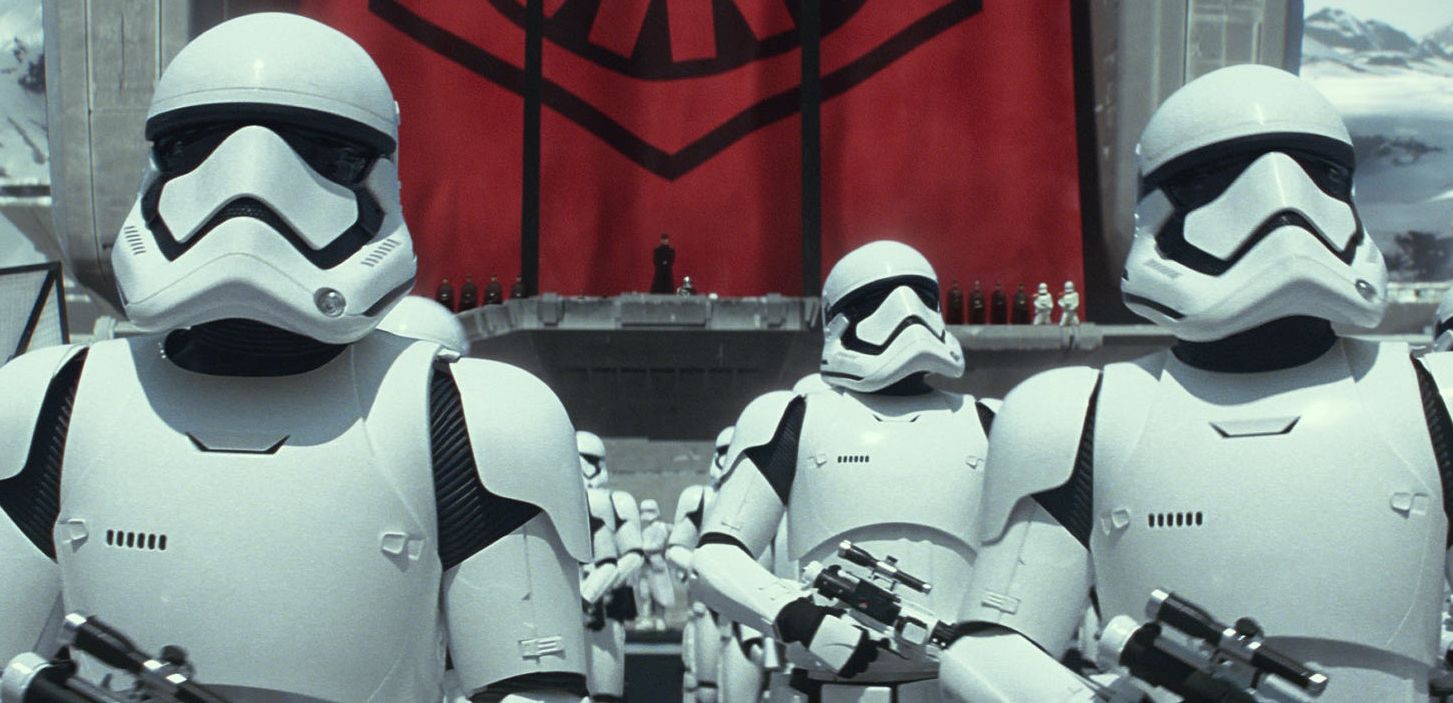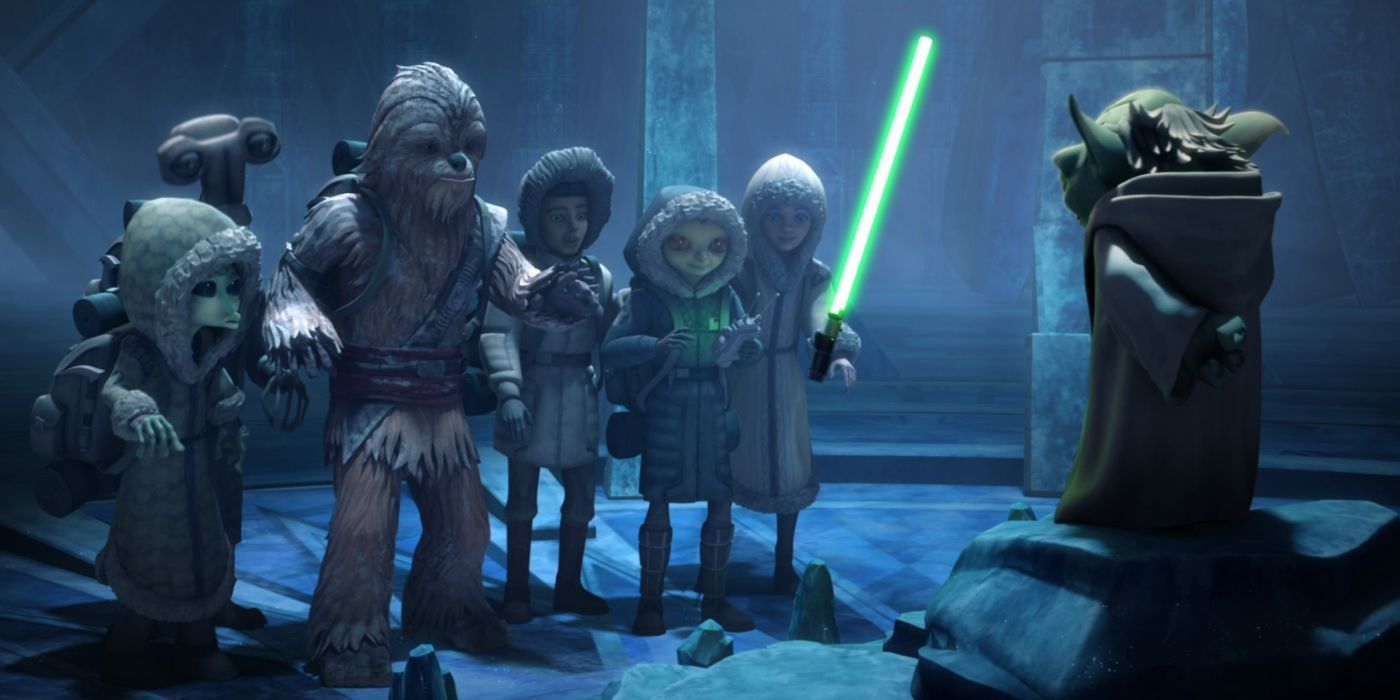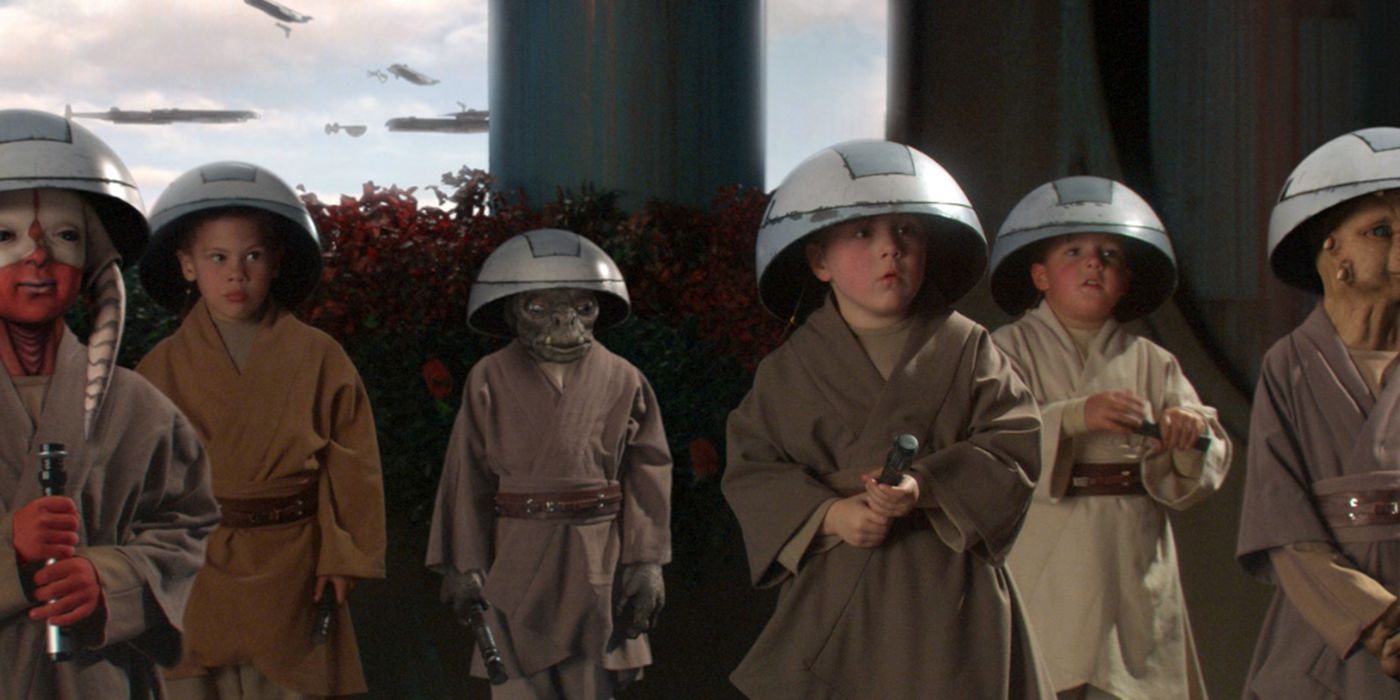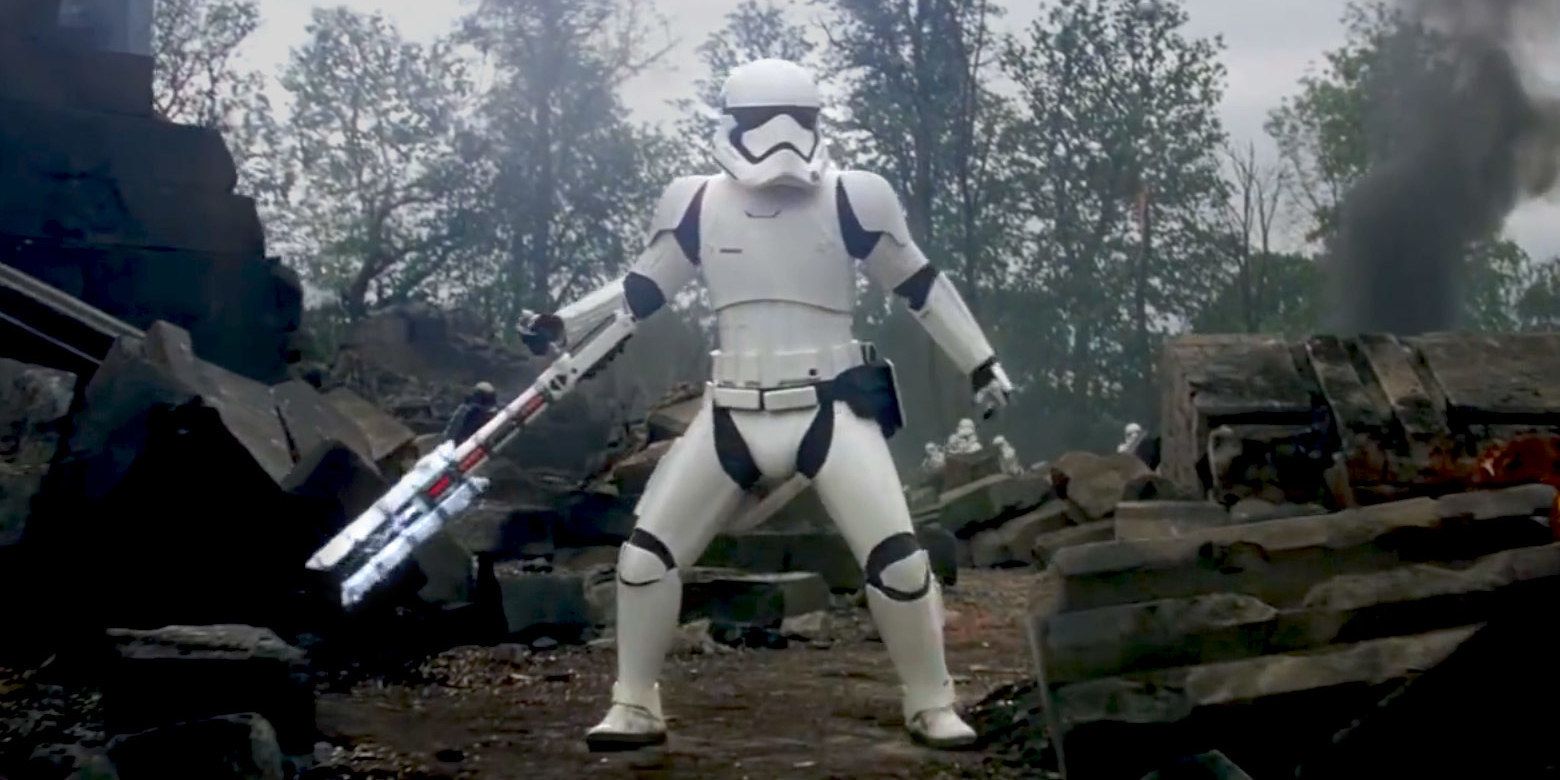The Jedi Order of the prequels seems to have very little with the sequel trilogy's First Order, but Star Wars, as George Lucas once said, is much like poetry in that it rhymes. Of course, on the surface, a comparison between these two orders seems absurd. Yes, both build upon the tradition set before it, from the Jedi Order's adherence to tradition to the First Order's recreation of the Empire's former "glory." Of course, the Jedi Order are the "heroes" while the First Order are the "villains."
However, the two have one disturbing commonality. Both groups utilize child soldiers to bolster their ranks: stealing impressionable youths for the purpose of re-educating them into perfect soldiers.
RELATED: Star Wars: The Rise Of Skywalker Promo Reveals Kylo Knows Rey's Full Story
The Nature of Child Soldiers
Kidnapping children in order to use them as soldiers ranks among one of the cruelest of war crimes. Children are taken from their homes and drafted into recruitment to serve a greater power. The mentality is that a government can raise a perfect soldier who won't question tradition or doctrine, in order to further serve the greater state.
In reality, child soldiers have been used throughout history and in modern eras of war. However, while the practice is now regarded as an egregious war crime, in the past it was actually a part of cultural tradition. Knights would train squires from an early age -- sometimes as early as six or seven -- to serve in battle. At that point in time, this was deemed as a normal practice. However, even then, the training was gradual. Squires and pages might accompany the knights into combat on occasion.
That said, even then, the practices employed by those who train modern child soldiers were still egregious. The modern perspective of child soldiers -- of which there are thousands currently in deploy -- is that of horror. Youths are stolen from their homes or join out of desperation. They are deployed on military attacks, suicide missions and even espionage assignments.
Ultimately, both practices are identical. Children are put into dangerous military situations without knowing any better. However, the difference is our perspective on them. If the practice is part of a tradition, the obvious horrors of the situation are often overlooked. If a new, aggressive military group forces this tradition on people, it's seen as awful. However, in both cases, the result is the same: children are being used to further the agenda of those above them.
Sci-fi has often approached the topic of child soldiers before, most famously in Orson Scott Card's novel Ender's Game. But with Star Wars, it's fascinating how the franchise presents these ideas without really addressing it at all.
Jedi Knights and Padawans
Lucas very clearly drew from knights and squires when designing the social structure of his Jedi knights. They train under a single teacher, only to, once deemed worthy, rise to the rank of Jedi Knight. However, before they become Padawans, the young force-sensitive children are trained as younglings in large schools in the Jedi Temple, often giving them lightsabers.
These young children are indoctrinated into the program without any real understanding of what real peril they are being put into. Yes, Yoda and Obi-Won lament when Anakin murders the younglings in mass at the Jedi Temple, but this really shouldn't surprise them, considering Yoda gives provides them with lightsabers at a very young age.
The intent here is to keep the children in training until they need to battle as Padawans, but how old is a Padawan? Anakin becomes Obi-Wan's apprentice before Attack of the Clones. The second prequel film takes place ten years after Phantom Menace, meaning Obi-Wan probably took Anakin as a Padawan into combat sometime before that.
Many of the Jedi Order objected to Anakin becoming a Jedi because he was "too old" to begin the training. This in many ways sounds less like only kids can learn the Force (Rey and Luke later demonstrate fairly well that isn't the case), but rather that the Jedi Order wants to educate children on how to properly use the force from a young age. This entails teaching them to suppress their emotions properly. When put in comparison to the First Order's brainwashing practice, this sounds more like the younglings are being trained as child soldiers.
The First Order's Child Soldiers
Finn from the sequel trilogy is a child soldier in the most disturbing sense of the word. He was kidnapped from his home, engaged in combat from a very young age and constantly monitored to remain in-line with the Order's wishes. Finn and the other First Order soldiers are programmed from birth to comply with the orders of their superiors.
As a result, Finn breaking away from his programming to reject the ideas of the system is seen as a worst-case result. This is what they trained their children not to do. The First Order's soldiers are trained from birth not to question their directive in order to perpetuate the agendas of their commanders.
This is obviously morally wrong. The movie even goes into detail as to why Finn's upbringing was awful and, upon breaking away from it, he's left without real direction other than to run away and do the right thing, whatever that might be. Finn then goes on a mission to destroy the First Order, an institution he sees as morally wrong.
This begs the question...how is Finn different than Anakin? Both see a corrupt institution and go out to destroy it. Arguably, the big difference is that Anakin never questions his training, but rather distorts the teachings to fit his own agendas (in part, thanks to Palpatine). Finn, on the other hand, just rejects the programming he's been subjected to. It seems peculiar how child soldiers, depending on the era, are regarded differently. If it's a knight, the child soldier is part of a noble tradition that has lasted for a thousand generations. If it's a modern military structure, it's seen for the horrible practice that it is. But in the end, the results are the same: unquestioning drones, serving an organization that requires control over its legions in order to survive.
Directed and co-written by J.J. Abrams, Star Wars: The Rise of Skywalker stars Daisy Ridley, Adam Driver, John Boyega, Oscar Isaac, Lupita Nyong’o, Domhnall Gleeson, Kelly Marie Tran, Joonas Suotamo, Billie Lourd, Keri Russell, Anthony Daniels, Mark Hamill, Billy Dee Williams and Carrie Fisher, with Naomi Ackie and Richard E. Grant. The film arrives Dec. 20.




